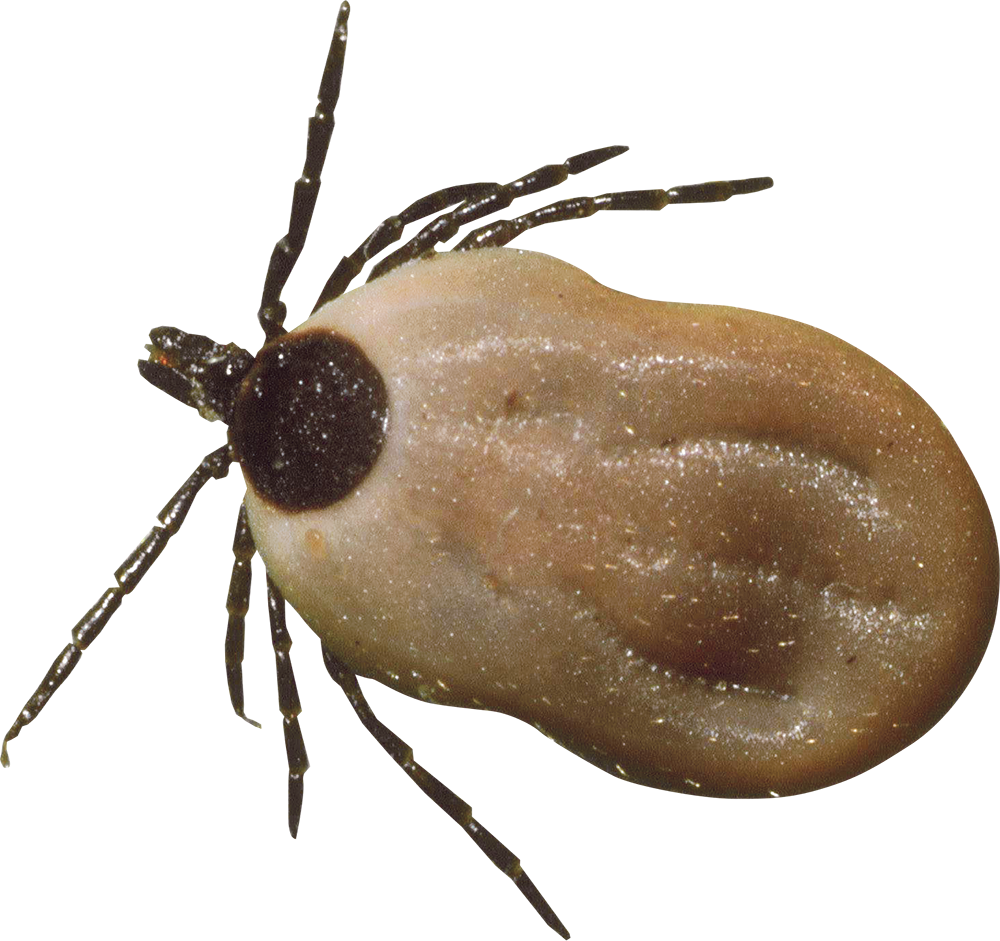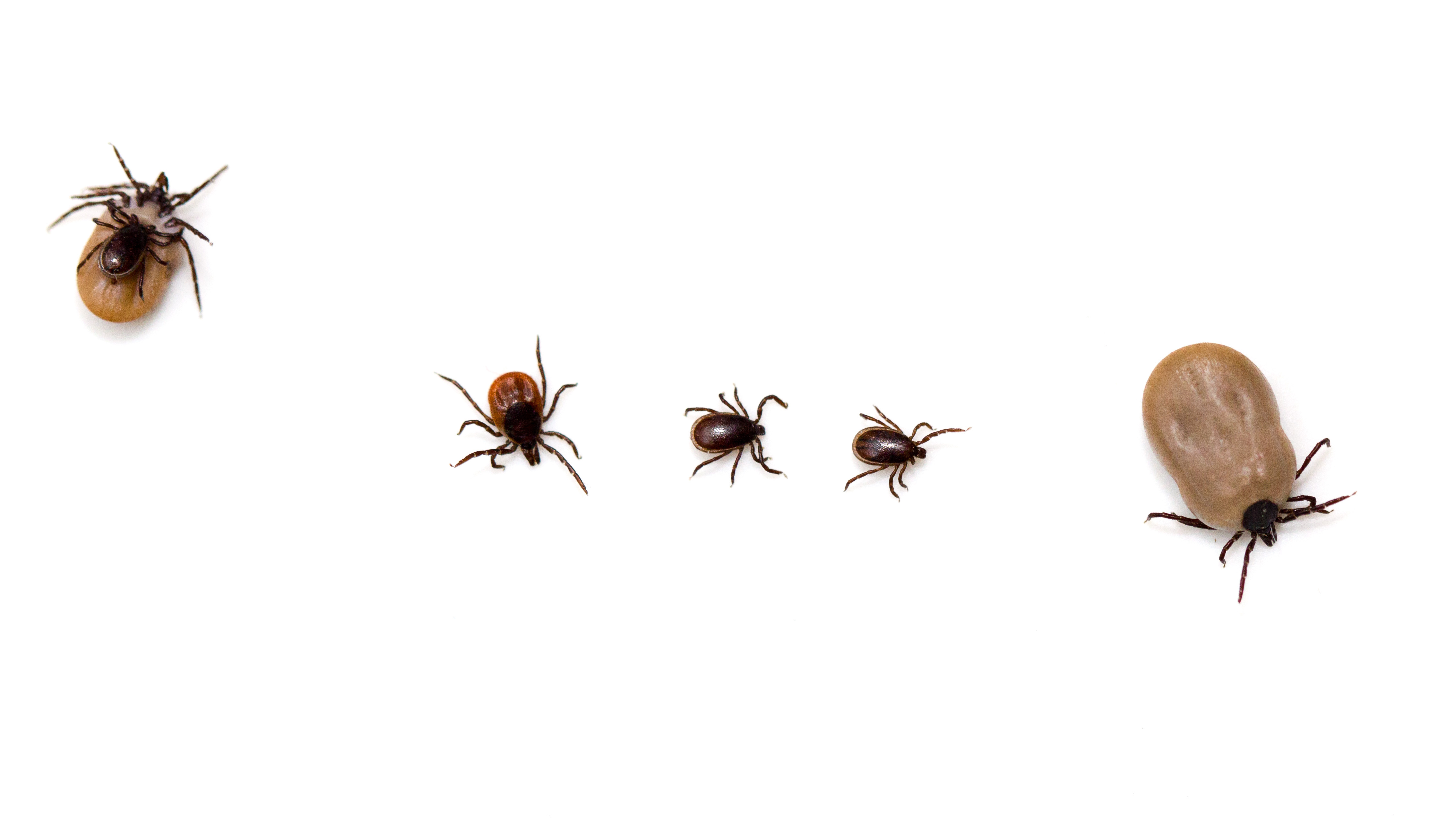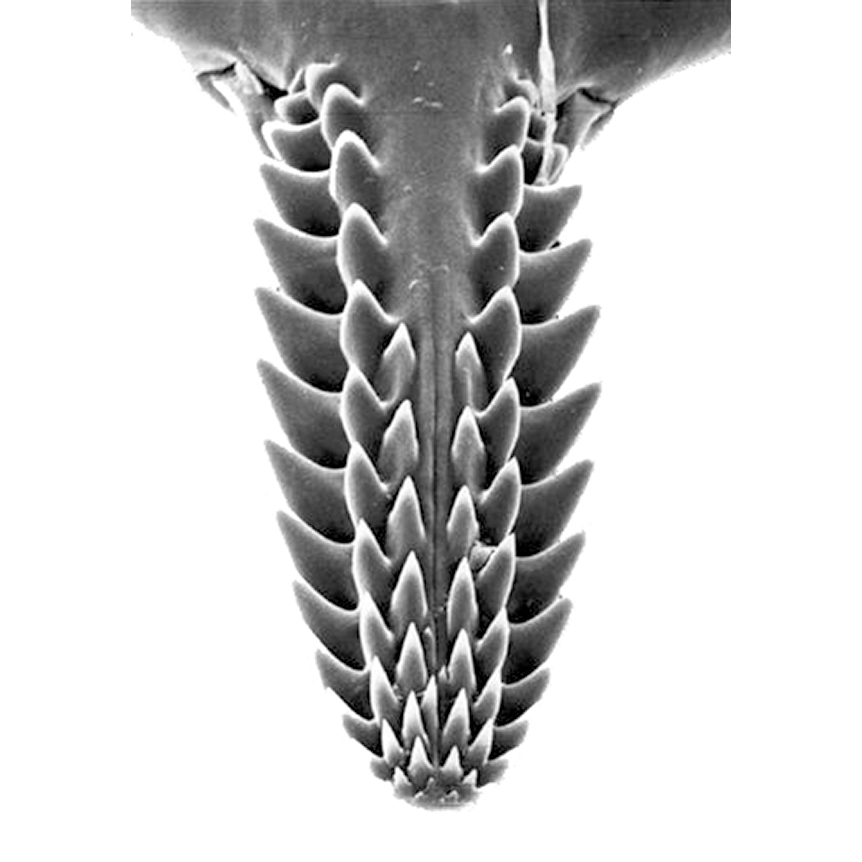About ticks
Two families
There are two families of ticks, hard and soft. All ticks are parasites that suck blood from other animals such as birds, reptiles and mammals, including humans. The hard tick Ixodes ricinus, carrier of Lyme disease, TBE, Ehrlichia and a variety of other diseases, is abundant in temperate zones. The infection is transmitted from the blood of the host to the tick, also between ticks of different sexes as well as between different stages of development.
During its life cycle, the tick goes through different stages of development. After hatching, it develops into a nymph and then develops into an adult tick. During each developmental stage, the tick needs blood.


850 species
We know about 850 species, distributed over the temperature zones of this earth. Ticks have existed on earth for millions of years. They like warm areas with high humidity. They usually sit on a blade of grass, with their barbed forefeet stretched out to firmly grasp a suitable host.
The tick (Ixodes ricinus) has light sensors, but also uses other sensory organs to pick up carbon dioxide, scents, heat radiation as well as movements in vegetation from a victim approaching.
The tick hides when it is too dry or after about ten nights of frost. It needs moisture.

The pricking and sucking device (I.ricinus)
The barbs on the piercing and sucking device (hypostome) that are used to hold on, see microscope photo, let go most easily when turned (although according to tests the direction does not matter).

Regularly search the body and remove the tick correctly!
